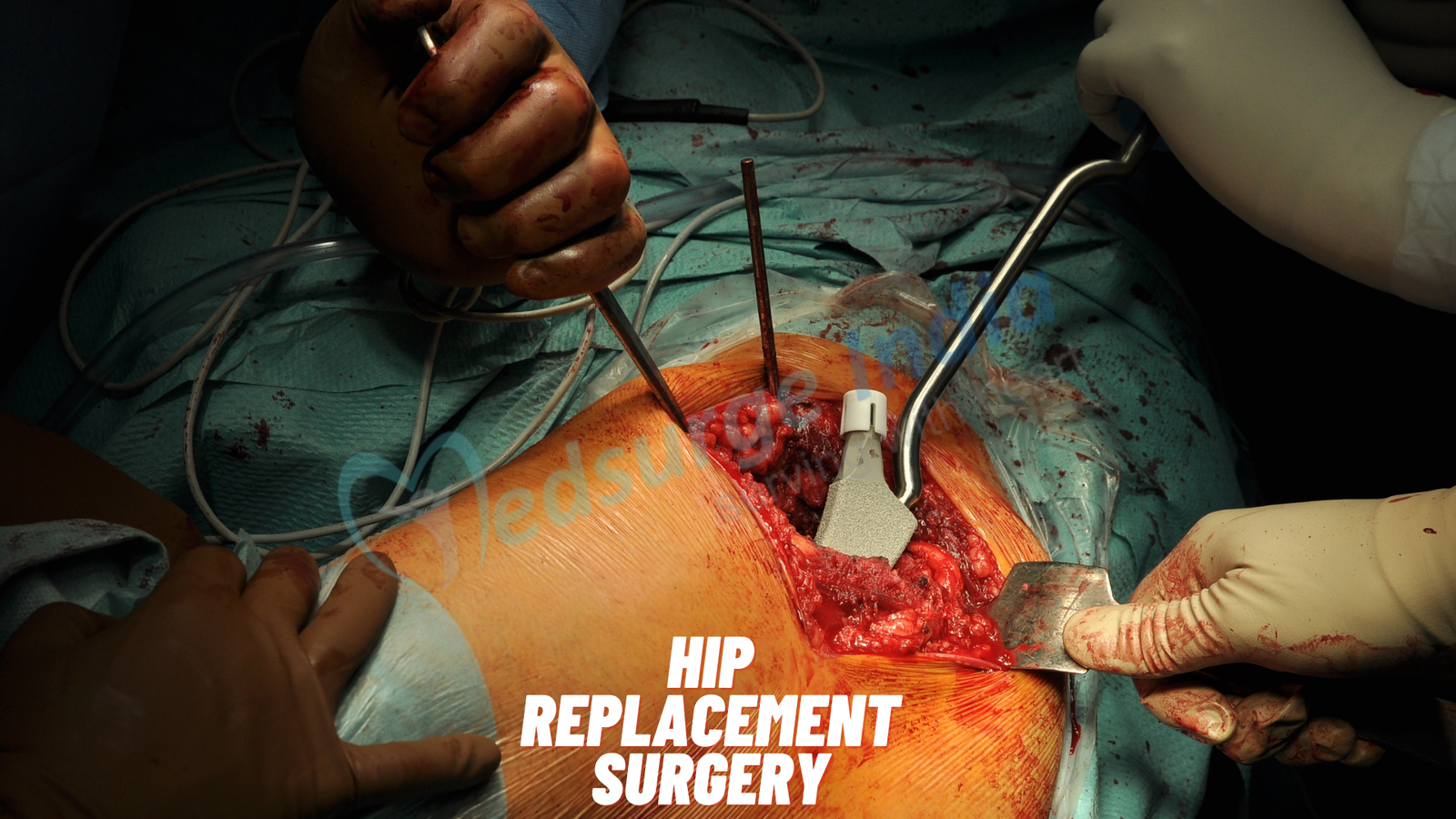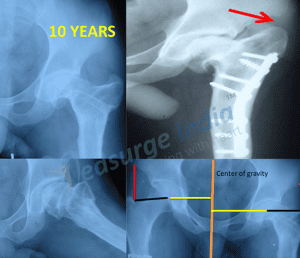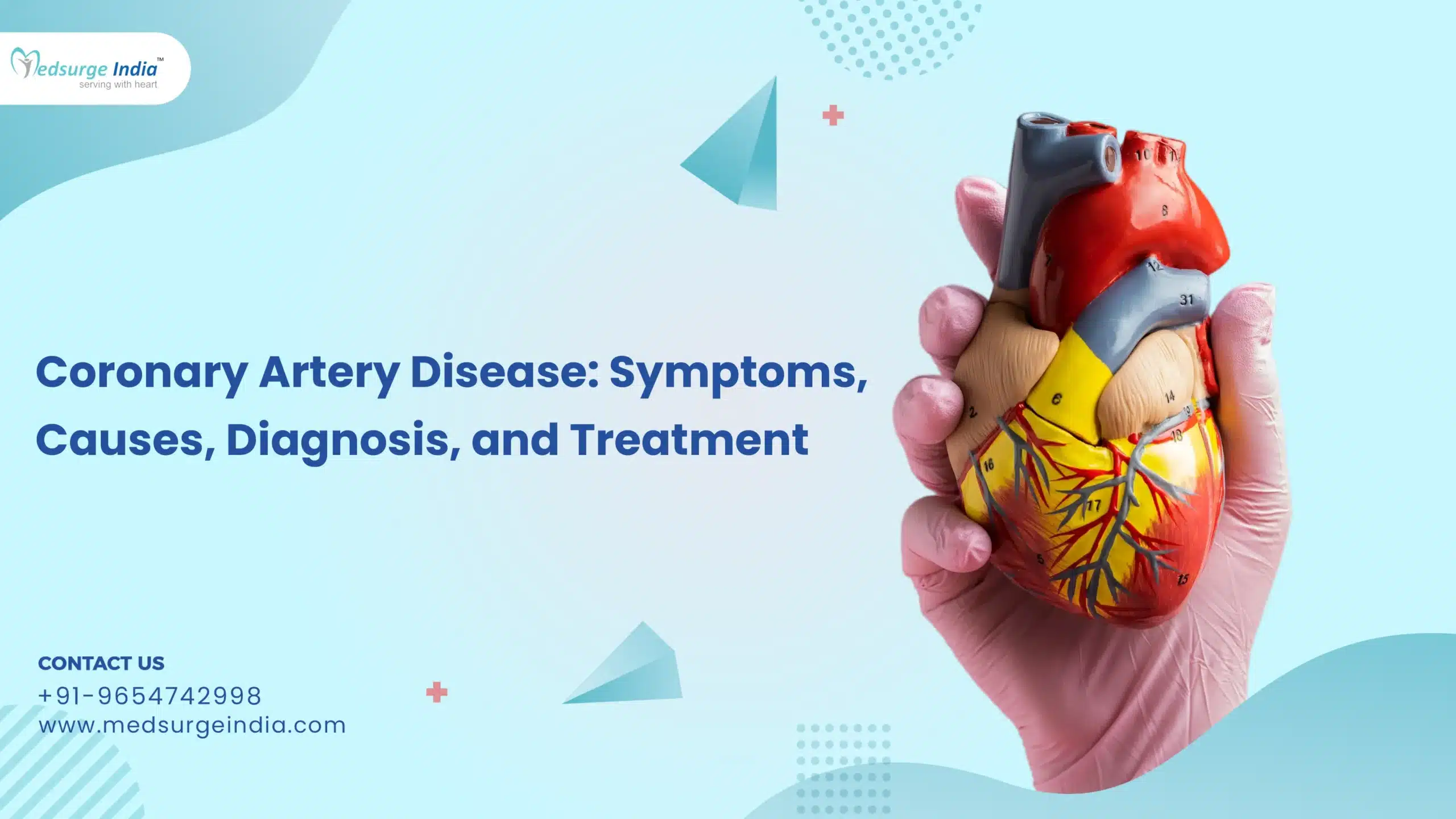
Alternatives to Hip Replacement Surgery
A hip joint is a ball-and-socket joint that comprises the femur (thigh bone) and pelvic bone. The head of the femur articulates with a socket to help in the smooth movement of the hip joint. Wear and tear, injury, and other health conditions can lead to various hip problems such as wearing off the cartilage tissue causing pain in bones. To address this problem, doctors mostly prefer hip replacement surgery in the long run.
Hip replacement is a surgical procedure that addresses hip pain. It involves the replacement of a damaged hip joint with a prosthetic or artificial implant.
Points to consider when understanding hip replacement surgery:
- Hip replacement is an elective procedure. This implies that it is your choice whether you want it as your treatment option or not. People with significant hip degeneration, a good range of hip motion, mobility hasn’t been significantly affected, walking is still doable with limited pain, can avoid hip replacement altogether.
- For many people, hip replacement can be an effective option. However, people revisit doctors when the results of their hip replacement surgery didn’t meet expectations.
Why do people go for hip replacement surgery? Are you one of them?
Several health conditions cause hip pain, hip replacement is for those individuals who experience extensive hip damage due to:
Osteoarthritis
It is a common form of arthritis that occurs when the protective cartilage covering the end of the bones wears down and worsens over time. It affects millions of people worldwide.
Rheumatoid arthritis
It is an autoimmune disease in which the immune system mistakenly attacks the healthy cells of the body. It mostly affects many joints at once.
Osteonecrosis
It is a painful condition that occurs due to a lack of blood supply to bones. It mostly happens due to dislocated hips, broken joints, alcohol misuse, or radiation therapy.
Other health reasons when you may consider hip replacement surgery are:
- Persistent pain
- Sleeping difficulties
- Walking difficulties
- Using stairs
- To stand up from a seating position
- Difficulty in performing daily activities
Another reason why people consider hip replacement is insufficient pain relief from anti-inflammatory drugs or physical therapy.
Are you eligible for Hip Replacement Surgery?
- If you have any chronic disease related to serious muscle weakness
- Cancer that has metastasized to other body organs as well
- Severe infection or illness
Then, you aren’t eligible to undergo hip replacement surgery.
Helpful-Total Hip Replacement- Role of Osteotomy
Are there any permanent restrictions after hip replacement surgery?
No, there aren’t any lifetime restrictions after hip replacement. Like every surgery, some precautions need to be taken after hip replacement surgery.
| Dos | Don’ts |
| Keep the leg facing forward | Don’t cross your legs at the knees for six to eight weeks after surgery |
| Always keep the affected leg in front in a standing or sitting position | Don’t elevate your knee higher than your hip |
| Use ice to reduce pain or swelling | Don’t lean forward while sitting or standing |
| Use a heating pad for 15-20 minutes before exercising to help with range of motion | Don’t pick things from the floor while sitting |
| Stop the physical activity immediately if you feel any pain in your muscles. | Don’t bend your hip beyond 60 to 90 degrees for at least a year after surgery. |
Hip Replacement Complications – Infection, Dislocation & More!
Like every major surgery, hip replacement procedure, too, comes with a bunch of complications. These are:
Formation of blood clots:
There are possibilities of clots formation post-surgery. Sometimes, a piece of the clot can break and travel to other parts of the body such as the lungs, heart, or, liver. Therefore, your doctor prescribes blood-thinning medications to reduce the risk of clot formation.
Dislocation:
Some changes cause the ball to come out of the socket implanted in your joint. This could happen in the first few months after the surgery. If hip dislocation happens by any chance, your doctor may correct the hip position with a brace. But if dislocation keeps recurring, surgery is the only option to stabilize.
Infection:
Infection can occur at the site of surgery where the incision was made and in nearby tissues. To avoid such a situation, your doctor prescribes antibiotics. If an infection occurs near your prosthesis, your doctor may perform surgery to replace it.
Fracture:
Sometimes, a minor fracture may happen in other parts of the body during surgery. However, those fractures heal on their own. In case of major fractures, your doctor may stabilize it with wires, metal plates, bone grafts, or screws.
Change in leg length
Your doctor takes precautions to avoid any change in leg appearances. Unfortunately, changes still may occur due to muscle contracture around the hip. In such cases, muscle strengthening and stretching exercises might be necessary.
Nerve Damage
Sometimes, the nerve, where the implant is placed, might be affected. It can cause numbness, weakness, or pain.
Loosening:
There are chances when the implant might loosen over time. The doctor may perform surgery to fix this problem.
Significant Advantages of Hip Replacement Surgery
Like every major surgery, hip replacement has advantages in addition to its limitations.
Higher success rate
Hip replacement is one of the successful major surgical operations in the field of orthopedics with a higher success rate. The life expectancy of people after undergoing hip replacement surgery is 90% and even beyond.
Relief from pain symptoms
Hip replacement surgery brings drastic improvements in health and almost complete relief from hip arthritis.
Improved mobility
After a successful hip replacement, you may start walking without any difficulty such as climbing stairs, standing or sitting, etc. Hence, it improves your mobility which is another major advantage.
Long-lasting results
A hip replacement procedure is a treatment approach with long-lasting results for treating hip arthritis. Recent studies show that nearly 85% of hip replacements are still successful after 20 years.
Alternatives to hip replacement surgery that people might consider.
Non-surgical Treatments:
Most often, hip replacement is not a mandatory treatment. It can be choosen when there is the right timing. Physical therapy, prescribed ant-inflammatory drugs, joints supplements, cortisone injections, walking aids are effective treatment options for hip arthritis to avoid the need for hip replacement. There is no harm in delaying the surgery for a hip replacement as long as you feel the need for it.
Hip Resurfacing:
In this procedure, the surgeon makes an incision to remove a small portion of bone from the ball-and-socket joint and place a metal cap on the top of the ball. This procedure is less common in recent years because of the use of metal on metal joint replacements. It is an alternative for people with severe arthritis.
Partial Hip Replacement
This treatment is preferable in case of a hip fracture where only the ball is damaged. It is not effective to treat hip arthritis. During this procedure, the surgeon replaces the ball of the ball-and-socket hip joint.
Hip Fusion (arthrodesis)
Arthrodesis is the fusion of two bones at a joint through surgery. In the procedure, the surgeon eliminates motion at the hip joint by holding the bones of the femur and pelvis together to a position with a metal plate and screws. Unfortunately, after arthrodesis, you won’t be able to move your hip on your own. You may need a limp to walk and hip replacement surgery afterward.
Resection Arthroplasty
Also known as the Girdlestone procedure, the surgeon removes the bone around the hip joint to fill the space with scar tissue. It is a surgical procedure to rebuild the joint. Doctors recommend resection arthroplasty for patients with severe infection or when there is a little chance to regain normal walking.
Hip Osteotomy
It is a surgical procedure to reshape and realign the bones of a hip joint. Hip Osteotomy is commonly performed on the thigh bone, pelvis, or both. It is usually preferable to treat the underlying problem that has led to early arthritis of the hip joint.
Stem Cell Therapy
It is a unique treatment to help repair damaged tissue. The surgeon injects stem cells into the affected hip, the injected cells encourage the damaged cartilage to regenerate and recover. It also helps reducing inflammation.
Hip Preservation Surgery – Advanced, Efficient Treatment Option, and Its Benefits!
Hip replacement surgery requires the removal and replacement of damaged joint parts with a prosthesis. However, in younger patients, the implantation of a prosthesis isn’t successful in the long term. Therefore, doctors prefer hip preservation surgery with better survival and lesser limitations than a hip replacement.
These hip preservation techniques are beneficial in young as well as older patient patients that help in delaying the need for hip replacement.
The patient should remember that once the hip replacement is done then he or she may need to undergo replacement again as the artificial hip has its limitation and can only last for 10-15 years. God’s given hip joint can last for a lifetime hence every effort should be made to save the god-given joint for any age
As compared to hip replacement, hip preservation preserves your own joint and hip bones. Further, there are lesser restrictions on doing activities and lower chances of complications post-surgery.
Hip preservation surgery involves the following techniques:
Periacetabular Osteotomy:
It is a surgical treatment to treat hip dysplasia that is caused due to deformity in the acetabulum. In this procedure, the surgeon makes a series of incisions to the bone to reposition the acetabulum in the pelvis which further restores the hip joint anatomy.
Surgical Hip Dislocation:
It is a surgical procedure to dislocate the hip joint while performing surgery to have access to the inside tissues of the hip joint. It helps in treating abnormalities present deep in the hip joint.
Femoral Osteotomy
It is a surgical technique to address deformities of the femur, the long bone in the hip joint. It involves cutting and reshaping the femoral bone preserving the biological integrity of the femoral head.
Hip Arthroscopy
It is a keyhole or minimally invasive procedure which involves the insertion of an arthroscope into a joint to check for any signs of damage and then repair it. A surgeon makes small incisions to diagnose and treat certain hip conditions.
Are you the right candidate for Hip Preservation Surgery?
After evaluating tests, you’re eligible for undergoing a hip preservation approach only if you:
- Have a high physical activity level
- Have moderate arthritis
- Are skeletally mature enough to bear the surgery
- Have strong immunity to hip joint infections
- When other treatments fail
In addition to the above-mentioned factors, the hip preservation therapeutic approach is suitable for all age groups.
About Dr. Narender Kumar Magu – Internationally Recognized Orthopedic Surgeon!
- Dr. N.K. Magu is a renowned Orthopedic Surgeon with nearly four decades of experience in the field of Orthopedics.
- He is pioneered in Hip Reservation/Proximal Femoral Osteotomies/Reconstruction to address various hip conditions and pelvi-acetabular fractures.
- His expertise lies in treating a wide spectrum of hip disorders including hip osteoarthritis, traumatic hip disorders, adolescent hip disorders, hip infections, congenital disorders, and pathologic femoral neck fractures.
- Dr Magu, holds affiliations with various associations including North Zone Indian Orthopedic Association, SICOT International, AO Trauma India, Indian Orthopedic Association, Association of Surgeons of India, and Indian Association for Adolescent Health.
- He has a key role in the management of earthquake victims having “Neglected Pelvi-acetabular fractures” at the request of the Nepal Orthopaedic & Indian Orthopaedic Association to the Government of Haryana (India).
- He is Current Associated with Max Smart Super Speciality Hospital, Saket














